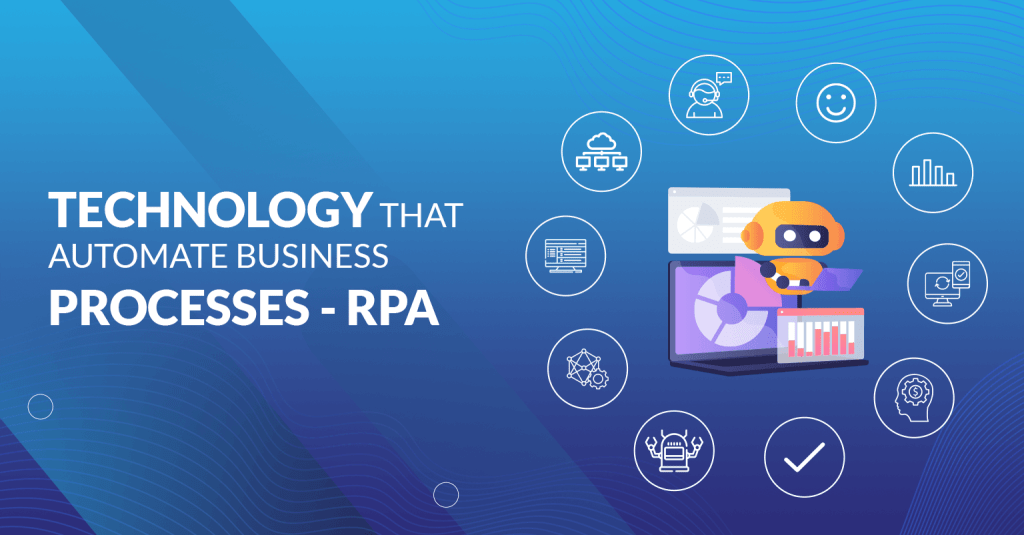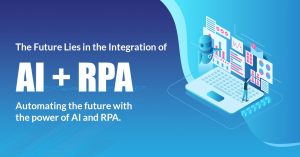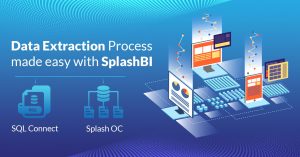
Many business owners and executives still don’t fully understand robotic process automation solutions, even though they have been around for decades. It is still being championed by many because of the agility it brings to businesses, along with the cost-saving benefits.
What is RPA?
RPA (Robotic Process Automation) is a technology in which software robots are used to automate business processes. It replaces or augments manual, repetitive and non-value-added tasks that are being performed by human workers.
In an age where technical solutions are created for everything, it makes sense to leverage Robotic process automation tools & technology for both small and large businesses alike. Robotic process automation is all about cost optimization, process efficiency, and helping businesses deal with a rapidly changing environment.
RPA as a service model
The automation of tasks is becoming prevalent in the IT industry. If you are familiar with this type of technology, then you will be no stranger to robotic process automation, as it has been taking over IT automation recently. As a result, the openness and availability of resources for learning about this type of software is growing dramatically.
Robotic process automation, as a specific type of artificial intelligence, means that algorithms can be run via software on computers and systems without human intervention. These processes are usually used to automate business tasks such as data entry and customer transactions.
Robotic process automation has continued to evolve and improve in recent years with new advancements and capabilities. Here are some of the latest developments in RPA:
Intelligent Automation:
Robotic process automation is increasingly incorporating advanced technologies such as Artificial Intelligence (AI) and Machine Learning (ML) to create intelligent automation solutions. This allows for more complex tasks to be automated and for bots to learn and adapt to new situations.
Hyperautomation:
This refers to the integration of multiple automation technologies, such as RPA, AI, ML, and others, to automate end-to-end business processes. Hyperautomation can lead to greater efficiencies and cost savings.
Low-code or No-code robotic process automation:
RPA vendors are developing tools that allow non-technical users to create automation workflows using visual interfaces, without the need for coding. This democratizes RPA and allows more people to use it without extensive technical expertise.
Cloud-based RPA:
RPA tools are increasingly being offered as cloud-based solutions, providing more scalability, flexibility, and accessibility to users.
Collaborative Robots (Co-bots):
Co-bots are a new generation of robots that can work alongside human workers and can be programmed to perform repetitive or dangerous tasks. They are being integrated into RPA workflows to enhance efficiency and productivity.
The latest advancements in Robotic Process Automation (RPA) indeed represent a significant leap forward in the world of business automation. These developments are fundamentally geared towards enhancing automation’s intelligence, accessibility, and collaborative potential, and they have the potential to redefine how businesses function in a rapidly evolving landscape.
- Enhanced Intelligence: Modern RPA systems are becoming increasingly intelligent, thanks to advancements in artificial intelligence (AI) and machine learning (ML). These technologies enable RPA robots to not only perform repetitive tasks but also make decisions based on data and evolving circumstances. For instance, RPA bots can analyze patterns in data, identify anomalies, and adjust their processes accordingly. This level of intelligence not only streamlines operations but also minimizes errors and improves decision-making.
- Accessibility and Usability: One of the key goals of recent RPA developments is to make automation tools more accessible to a wider audience. User-friendly interfaces, low-code or no-code platforms, and intuitive design are making it easier for non-technical users to create, deploy, and manage RPA workflows. This democratization of automation empowers employees from various departments to automate tasks and processes relevant to their roles without needing extensive technical skills. This inclusivity drives efficiency across the organization.
- Collaborative Automation: Collaboration is another focal point of the latest RPA trends. Automation is no longer confined to silos within organizations. Instead, RPA is being integrated into collaborative platforms, allowing humans and robots to work together seamlessly. This collaborative automation approach involves bots handling routine, data-heavy tasks, while employees focus on more strategic, creative, and value-added activities. Such synergy enhances productivity, reduces bottlenecks, and optimizes resource allocation.
- Transformation and Job Creation: Contrary to the misconception that automation leads to job loss, robotic process automation can actually create new roles and opportunities within a business. As organizations automate repetitive and mundane tasks, employees can shift their focus to higher-value tasks that require critical thinking, problem-solving, and creativity. This transformation not only enhances job satisfaction but also boosts innovation. Additionally, RPA deployment and management themselves create roles for developers, analysts, and process automation experts, contributing to job growth in the tech sector.
In conclusion, the latest developments in robotic process automation represent a pivotal moment in the evolution of business automation. By integrating intelligence, accessibility, and collaboration, these advancements are enabling organizations to operate more efficiently, adapt to changing market conditions, and foster a workforce that is more engaged and empowered. Far from being a threat to employment, RPA is ushering in a brighter future where humans and robots work together to achieve unprecedented levels of productivity and innovation.
Contributed by : Minosh Salam, Director-SquareOne Technologies





